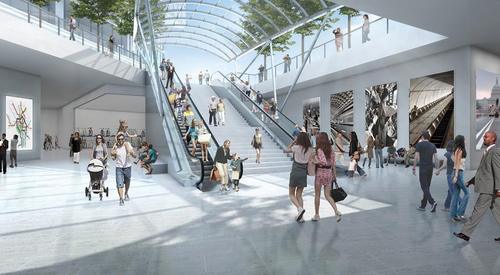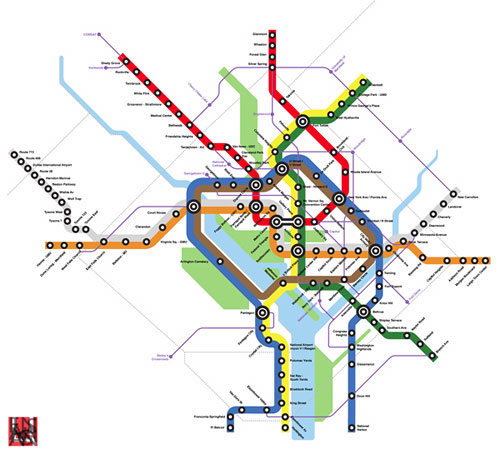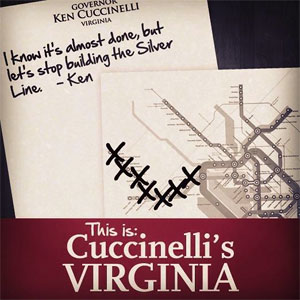This futuristic concept for the Bethesda station entrance has an even more futuristic Metro map
Imagine that one day the Bethesda Metro station’s entrance could look like this. Then look closely at that Metro map and imagine that we could have all of the extra, nonexistent Metro lines it shows.
This rendering shows the escalators and stairs from the street level to the current bus bays. People entering Bethesda station from the street descend to the bus bay level, then continue into longer escalators continuing down.
As Bethesda Magazine reports, Brookfield wants to build a high-rise building on top of what’s now a large but mostly inert plaza, and create a “Bethesda Central Park” of more active and greener space.
But Clark Enterprises, another developer in Bethesda whose headquarters are next door, wants to keep the space open to protect views from its buildings, and has designed a competing park plan that puts the park space closer to the street, atop Brookfield’s land.
Brookfield recently tried to sweeten the pot by proposing a big facelift for the bus bay level and the entrance. Neither company, however, is in a position to make one piece of this drawing a reality: that Metro map, which is not the real Metro map but actually Neil Flanagan’s 2009 fantasy Metro map:
Flanagan designed a Metro loop that’s somewhat like the one WMATA has actually proposed, but larger, stretching out to U Street and Florida Avenue instead of staying downtown, and with a branch east of the Anacostia and out to National Harbor.
This happens to be the same fantasy map Terry McAuliffe’s campaign accidentally used in a flyer attacking his 2013 gubernatorial opponent, Ken Cuccinelli:
Presumably there’s a search on Google Images or the like which brings up this map, and some graphic designers less well versed in the Metro system grab it, not realizing what it is. It’s happened to maps I’ve made as well, like this 2008 MediaBistro ad or this graphic from one cheesesteak shop:

It’s always worth laughing at this phenomenon, though.



